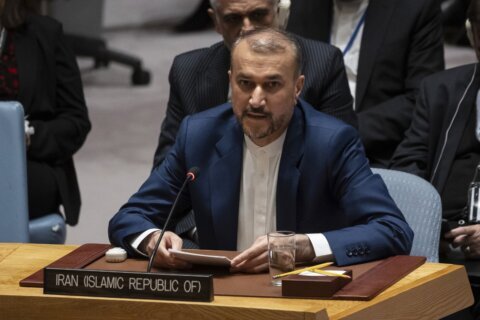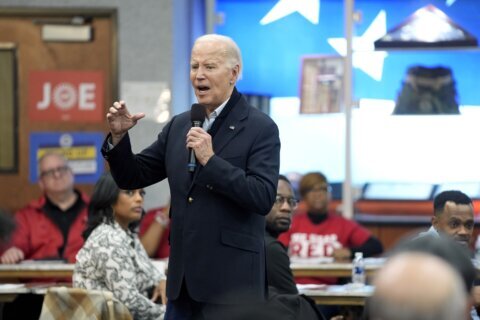BEIRUT (AP) — President Bashar Assad made a rare visit to the northern province of Aleppo on Friday to tour the country’s largest city and inaugurate a power station that was once held by insurgents and suffered wide damages during the war, state media reported.
The visit by Assad and his family to the city of Aleppo — Syria’s largest and once the nation’s commercial center — was his first since government forces captured its rebel-held eastern neighborhoods in December 2016 after a monthslong battle.
Photographs published by the president’s office show Assad, his wife, Asma and their two sons and a daughter walking through the historic covered market in Aleppo, one of the city’s landmarks that suffered wide destruction during the conflict. Parts of the market are now being renovated.
Assad also toured the centuries-old Ummayad Mosque, known known as The Great Mosque of Aleppo, where renovation work has been ongoing for years.
The capture of eastern Aleppo in 2016, after four years in rebels hands, was Assad’s biggest victory in the conflict at the time.
Before touring the city, Assad visited a power station in the eastern part of Aleppo province, according to his office and the state news agency, SANA.
Today, government-held parts of Syria endure more than 12 hours of power cuts a day as production is far less than the needs of the country. Syria’s infrastructure saw much destruction during the 11-year conflict.
SANA also said Assad inaugurated a part of the Aleppo power station that was renovated and is ready to produce up to 200 megawatts. The report said work was underway to also fix other parts of the station.
Friday’s inauguration comes on the sixth anniversary of Syrian troops retaking the station from militants, the report said.
Syrian government forces now control much of the country, thanks to allies Russia and Iran, which have helped tip the balance of power in Assad’s favor. The civil war that began in 2011 has killed hundreds of thousands of people, displaced half the country’s population and left large parts of Syria destroyed.
Syria’s Prime Minister Hussein Arnous recently told parliament that the country’s needs stand at about 7,000 megawatts but stations only produce a a bit over 2,500 megawatts.
Arnous added that a main reason for electricity shortages is that Syria’s production of natural gas dropped sharply during the conflict as some of the country’s largest oil and gas fields are held by U.S.-backed Syrian Kurdish-led fighters.
In November, Syria signed a contract with a group of companies from the United Arab Emirates to build a solar power station in a Damascus suburb. The station will produce 300 megawatts at peak rates.
A month earlier, Syria’s electricity ministry signed a $115 million contract with an Iranian company to rebuild another power station in central Syria.
Copyright © 2024 The Associated Press. All rights reserved. This material may not be published, broadcast, written or redistributed.







